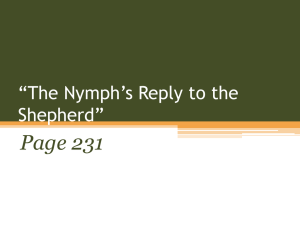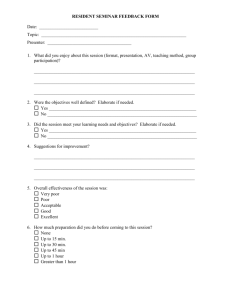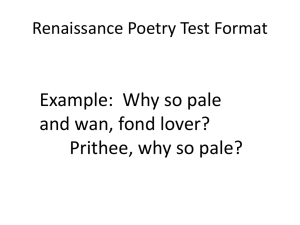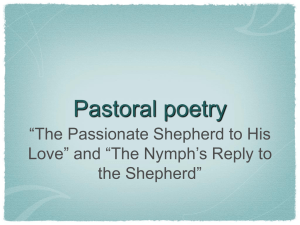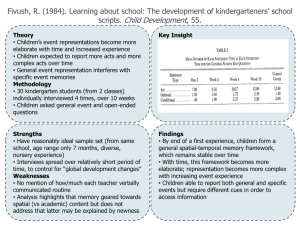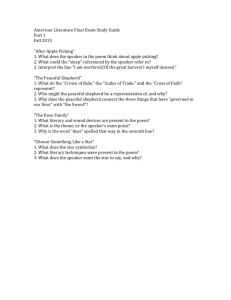Weekly Syllabus 1/25-1/29
advertisement
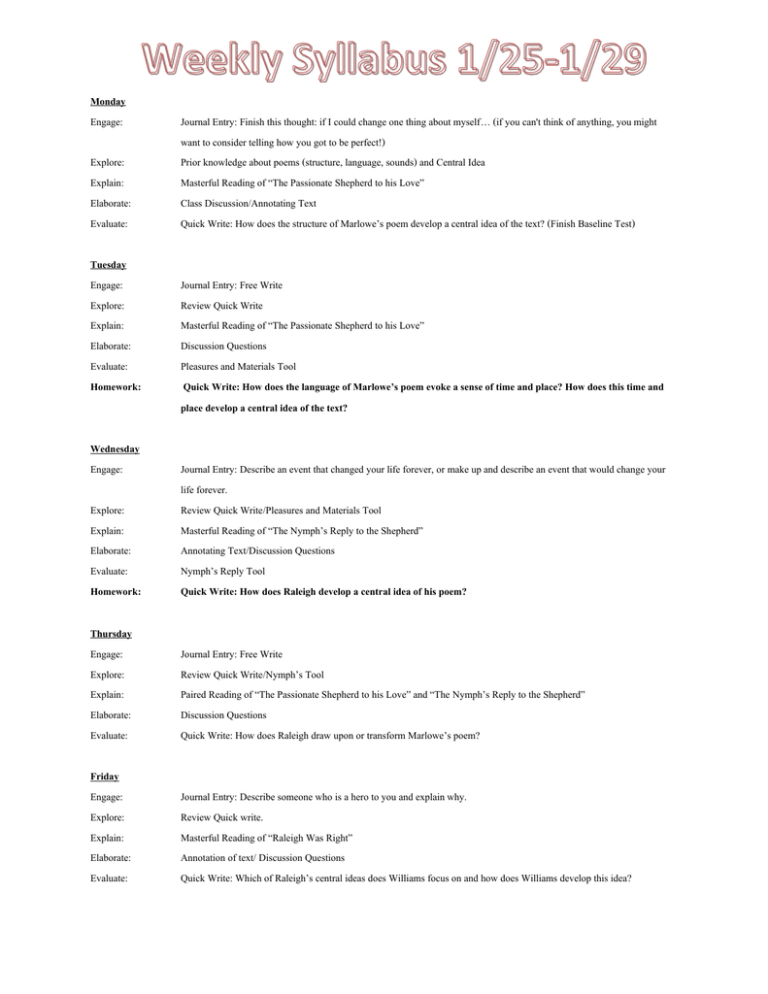
Monday Engage: Explore: Explain: Elaborate: Evaluate: Tuesday Engage: Explore: Explain: Elaborate: Evaluate: Homework: Wednesday Engage: Journal Entry: Finish this thought: if I could change one thing about myself… (if you can't think of anything, you might want to consider telling how you got to be perfect!) Prior knowledge about poems (structure, language, sounds) and Central Idea Masterful Reading of “The Passionate Shepherd to his Love” Class Discussion/Annotating Text Quick Write: How does the structure of Marlowe’s poem develop a central idea of the text? (Finish Baseline Test) Journal Entry: Free Write Review Quick Write Masterful Reading of “The Passionate Shepherd to his Love” Discussion Questions Pleasures and Materials Tool Quick Write: How does the language of Marlowe’s poem evoke a sense of time and place? How does this time and place develop a central idea of the text? Explore: Explain: Elaborate: Evaluate: Homework: Journal Entry: Describe an event that changed your life forever, or make up and describe an event that would change your life forever. Review Quick Write/Pleasures and Materials Tool Masterful Reading of “The Nymph’s Reply to the Shepherd” Annotating Text/Discussion Questions Nymph’s Reply Tool Quick Write: How does Raleigh develop a central idea of his poem? Thursday Engage: Explore: Explain: Elaborate: Evaluate: Journal Entry: Free Write Review Quick Write/Nymph’s Tool Paired Reading of “The Passionate Shepherd to his Love” and “The Nymph’s Reply to the Shepherd” Discussion Questions Quick Write: How does Raleigh draw upon or transform Marlowe’s poem? Friday Engage: Explore: Explain: Elaborate: Evaluate: Journal Entry: Describe someone who is a hero to you and explain why. Review Quick write. Masterful Reading of “Raleigh Was Right” Annotation of text/ Discussion Questions Quick Write: Which of Raleigh’s central ideas does Williams focus on and how does Williams develop this idea? \ Annotation Instructions One annotation strategy is to mark the text with symbols that signify certain types of observations. Annotation codes and symbols: 1. Put a question mark next to a section you’re questioning (?). 2. Write in the margin at the top or bottom of the page to record questions (and perhaps answers) that a passage raises in your mind. 3. Use an exclamation point for areas that remind you of another text, strike you in some way, or surprise you (!). 4. Star ideas that seem important, or may support your thesis writing later (*). 5. Box or circle words and phrases that you do not know or that you find confusing. Rewrite a word or phrase you might have figured out. 6.
